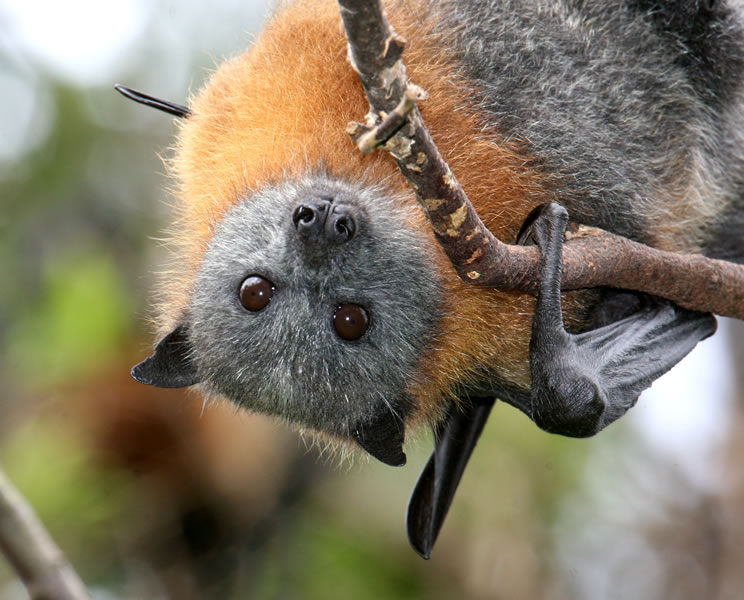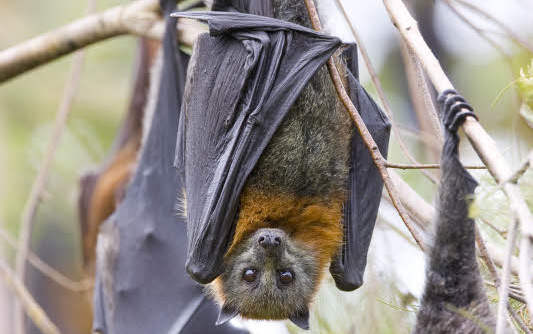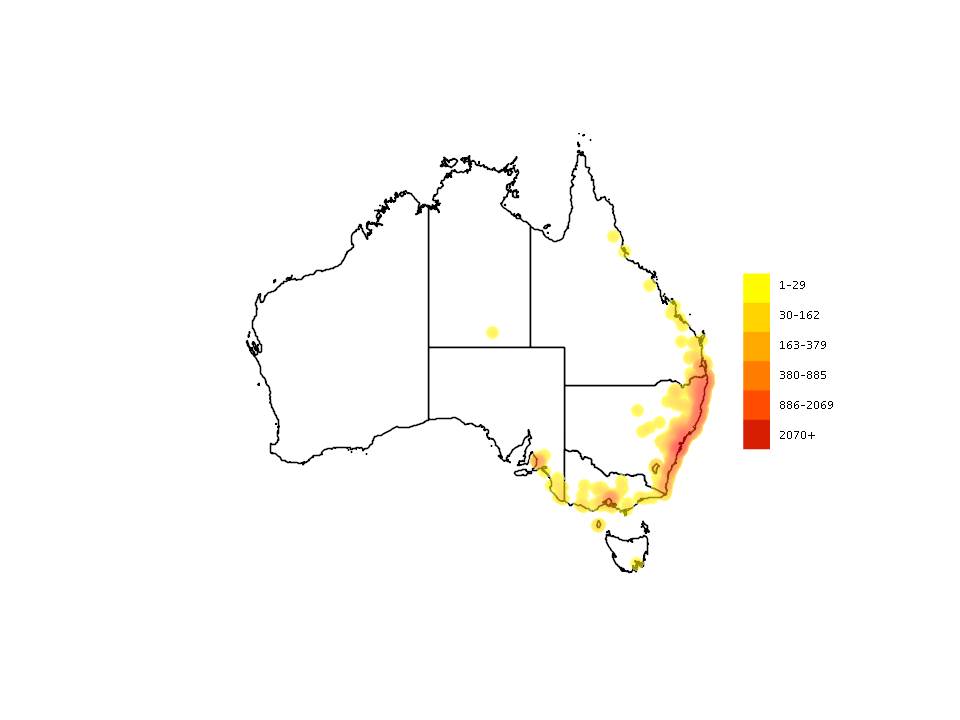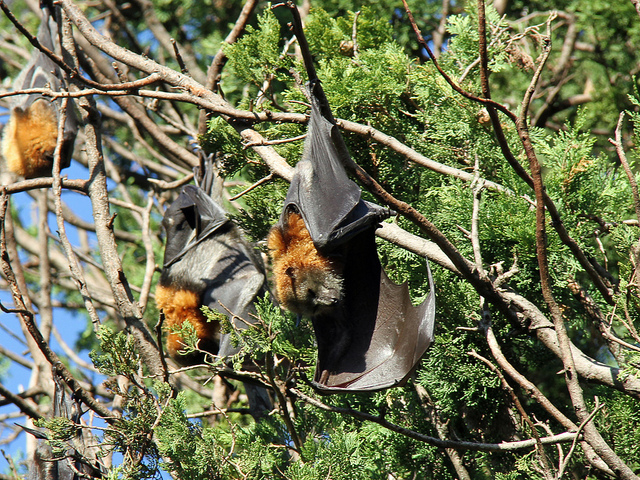Behaviour
Call
More than 30 different calls that are associated with specific behaviours; for example, mating, locating its young, defending its territory, and squabbling over food.
Diet
A range of fruit, particularly figs, and also nectar and blossom from native trees. It crushes the fruit and flowers with its strong teeth, swallows the juice and some of the fruit but spits out the seeds. It feeds at night and prefers to eat close to where it roosts (resting upside down) but can travel up to 50 kilometres in search of food.
Feeding groups vary from one to six or more in a single tree, and individuals will defend their feeding territory, returning to the same feeding ground each night until the food source is depleted.
Movement
It spends much of its time in groups known as camps, hanging upside-down from the branches of trees. It leaves the camp at sunset to feed, returning in the early hours of the morning or at dawn. Grey-headed Flying-foxes show a regular pattern of seasonal movement with most of the population congregating in northern NSW and Queensland in May and June, where they feed on winter-flowering trees. They move depending on the climate and the flowering and fruiting patterns of their food sources.
Breeding
It usually returns to the same camp each year to give birth and raise its young. Annual mating commences in January and continues over many months. Females give birth to a single live young in September to late November each year. The baby clings to its mother’s belly for the first three to six weeks until it becomes too heavy. Then it is left in a “crèche” in the camp while its mother looks for food at night. When she returns, she recognises her baby by its smell. The baby feeds on milk from its mother’s nipples until it is four months old when it starts to follow the adults each night and learns how to find its own food. The young are able to fly at about three months old (around January), and are able to feed independently when five to six months old.
Field Guide
Improve your identification skills. Download your Grey-headed Flying Fox field guide here!





